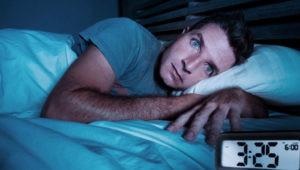The last year has been an exceptional time for the twenty-first century people. With the COVID-19 pandemic taking the world by storm, the world literally went under stagnation. Even today, the threats of contamination loom large across the globe. While the virus responsible for the disease passed through several layers of changes to adapt to the environment, humans did not have anything protective until recently.
During the initial phase of the contraction, several countries imposed widespread lockdowns to restrict the spread of the disease. This indeed made the lifestyle irregular for millions. The lockdown not only impacted the economies adversely but also affected human psychology. People struggled to find their peace of mind with no place to go and nothing productive to do.
Many also went under depression, and plenty suffered peripheral problems like insomnia, bad dream, etc. experts have always linked these issues with the pandemic. To prove the same, researchers have also collected data to validate the claims. While we often refer to pandemics and other catastrophic occurrences as a bad dream or a nightmare, in the case of COVID-19, the metaphor came out to be true in every sense.
The Study Of Dreams
The study published on Frontiers in Psychology establishes the claim in many ways. A group of researchers belonging to the University of Helsinki initiated this endeavor and concluded that most people had weird dreams throughout the span of lockdown. The amazing part of the study is that the researchers found a strange similarity in the pattern of these dreams even though the samples belonged to different sections of people and regions.
Almost everyone dreams while sleeping. As we all know, it is our subconscious mind that generates dreams. Hence, our thought process, life conditions, and experiences influence the dream content immensely. This is precisely what happened during the pandemic. With widespread uncertainty and deadly news coming from all over the world, people thought of similar things in a similar manner. Hence, the dream patterns resembled. And, the dream content matched to a large extent.

The Outcomes
Anu Katriina Pesonen and her colleagues put in their best to find out the exact extent of the lockdown on the quality of dreams of the people. The team collected stress and sleep data through crowd-sourcing during Finland’s sixth-week lockdown. This data gave the team a precise understanding of how the dream patterns have changed how the sleep quality and quantity have also altered. The sample-set had 4275 people of average age 43 years for sleep assessment and 811 more people for dream assessment.
The data showed a somewhat skewed pattern, with almost 54.2% having had increased their duration of sleeping and plenty with higher rates of awakening. Nearly 26% of these people also reported a rise in the frequency of nightmares. While dreams and nightmares always remain a part of everyone’s life, an increased frequency of bad dreams indeed stirs concern.
Researchers collected all these data and inputs and fed these to the AI algorithm for flawless analysis. The system came with 33 distinct dream clusters that were dominant in the set. The researcher further named these clusters smaller dream particles. The basis of these clusters rested on similarity in dreams and word sequences mentioned by the dreamers.
According to the specific data analysis, twenty out of these thirty three dream clusters came out to be bad dreams. 55 % of these bad dreams were about the pandemic. Hence, a dominant part of the bad dreams was about the pandemic. Therefore, the impact of the pandemic on the human mind came out clear and transparent.
Nature Of Dreams
The pandemic-specific umbrella had themes like social distancing failures, protective equipment, coronavirus contagion, apocalypse, and dystopia. To be more specific, mistake-hug, handshake-restriction, hug-handshake, handshake-distancing, distancing-crowd, distancing-disregard, crowd-party and crowd-restriction were parts of the word pair “disregard of distancing.”
The study further concluded that most people who participated in the study reported having had more stress than before. The enhanced levels of stress generated more bad dreams. Hence, people, in general, suffered from pandemic-related nightmares that clearly indicated troubled psychology.
Pesonen further explained that in some cases, the research also found people having the same mainframe or visual imageries in their dreams. Appreciating the role of the novel concept of linguistics-based AI involvement in dream interpretation, she further added that AI could be a revolution for the healthcare sector. She further said that AI could play a critical role in determining the impact of the pandemic on human health and mind.
At SepStream®, we keep all the services updated and at par with the international standards. For any imaging solution, you can trust our services blindfolded. The variety of tools, options, and prices will surely meet your requirements. Our team of experts will always offer you the best and feasible solutions, no matter your query.
616 comments on AI Links COVID-19 To Poor Sleep, Bad Dreams
Comments are closed.